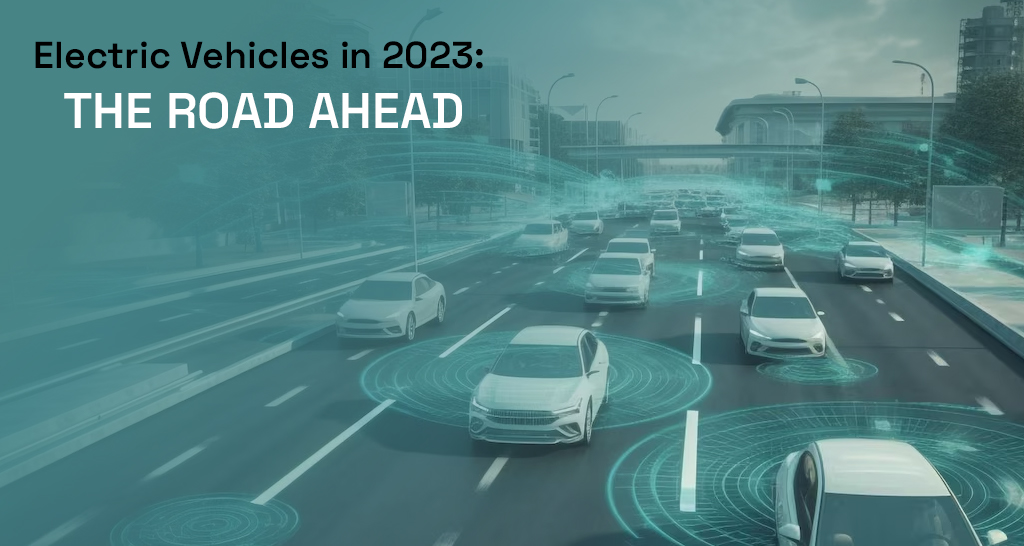In recent years, electric vehicles (EVs) have made significant strides towards reshaping the automotive industry and our broader transportation landscape. As we step into 2023, it’s crucial to take a closer look at the state of electric vehicles and the exciting developments on the horizon. From innovations in technology to shifting consumer preferences, the road ahead for electric vehicles promises to be both transformative and fascinating.
The Accelerating EV Market
The electric vehicle market has been on a rapid ascent, and 2023 is poised to be another milestone year. Governments worldwide have been rolling out ambitious plans to phase out internal combustion engine vehicles in favor of EVs. These initiatives include tax incentives, rebates, and stricter emissions regulations, which are pushing automakers to invest heavily in electrification.
As a result, we can expect to see a more diverse range of electric vehicles on the market. While established automakers continue to release electric versions of their popular models, new startups are entering the scene with innovative designs and features. In 2023, consumers will have a broader selection of EVs across various price points, making them more accessible to a wider audience.
Battery Technology Advancements
One of the critical factors driving the growth of EVs is the ongoing development of battery technology. In 2023, we can anticipate improvements in battery energy density, charging times, and overall durability. These advancements will address some of the key concerns that have traditionally held back potential EV buyers.
Battery energy density is essential for extending the range of electric vehicles. In 2023, we may see batteries that can store even more energy in the same amount of space, resulting in EVs that can travel longer distances on a single charge. This will make electric vehicles more practical for long-distance travel and reduce range anxiety.
Charging infrastructure is also set to improve significantly. Faster charging technologies, such as ultra-fast chargers capable of replenishing an EV’s battery in a matter of minutes, are expected to become more widespread. Additionally, 2023 could see more standardized charging connectors, making it easier for consumers to charge their vehicles regardless of the charging network.
The Rise of Autonomous Electric Vehicles
The convergence of electric propulsion and autonomous driving technology is another exciting trend to watch in 2023. Major players in the automotive and tech industries are investing heavily in developing self-driving electric vehicles. These vehicles have the potential to revolutionize transportation by enhancing safety, reducing traffic congestion, and improving the overall efficiency of urban mobility.
In 2023, we may see more advanced driver-assistance systems (ADAS) integrated into electric vehicles, bringing us closer to fully autonomous driving. Features like adaptive cruise control, lane-keeping assist, and self-parking capabilities are becoming increasingly common in EVs, making them more appealing to tech-savvy consumers.
Sustainability and Environmental Impact
One of the primary reasons people are turning to electric vehicles is their reduced environmental impact. In 2023, the sustainability aspect of EVs is likely to gain even more prominence. Automakers are striving to make their production processes more eco-friendly, and some are experimenting with innovative materials and recycling methods to reduce their carbon footprint.
Additionally, renewable energy sources, such as solar and wind power, are being integrated into EV charging infrastructure. This means that as the EV market grows, it becomes inherently cleaner and more sustainable. As a result, electric vehicles will continue to be a crucial component of efforts to combat climate change.
Challenges on the Road Ahead
While the future of electric vehicles is undeniably promising, there are challenges that need to be addressed in 2023 and beyond. One of the most significant challenges is the need for more extensive charging infrastructure. Governments and private entities must work together to expand the network of charging stations, particularly in rural areas, to make EV adoption more feasible for everyone.
Affordability remains a concern for many potential EV buyers. Although prices have been gradually coming down, electric vehicles are often still more expensive than their gasoline-powered counterparts. Policymakers and automakers must continue to explore ways to make EVs more affordable through incentives and subsidies.
Additionally, there is the issue of battery recycling and disposal. As the number of EVs on the road increases, so does the need for sustainable battery recycling methods. Developing efficient and environmentally friendly ways to handle end-of-life batteries is crucial to prevent environmental harm.
Conclusion
As we step into 2023, electric vehicles are poised to become an even more integral part of our lives. With advancements in technology, an expanding market, and a growing commitment to sustainability, the road ahead for electric vehicles looks bright. However, there are still challenges to overcome, and it will require a collaborative effort from governments, industries, and consumers to accelerate the adoption of electric vehicles and create a cleaner, more sustainable future for transportation.

